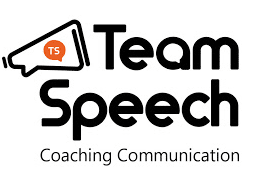Who might benefit from AAC? Augmentative and Alternative Communication may be a tool for any child who cannot meet their communication needs with verbal speech. This may include children with no verbal speech, limited verbal speech or children with reduced intelligibility who are not understood across environments or in unknown contexts. Research shows that introducing AAC will not hinder verbal speech development but instead often increases verbal speech. Here are a few examples of children using AAC who have received services through Team Speech.
Meet J! :

J came to Team Speech just after his 3rd birthday. He had received an iPAD with communication application at the end of Early Intervention but he had pages with limited choices and not an organized language system that he could grow with. His mom had not been trained in partner augmented input yet or how to incorporate AAC throughout J’s day. After teaching mom PAI she became an incredible model for J and as a team we quickly realized that J needed a lot more vocabulary and an organized system to grow. J has Autism and appears to be a visual learner. The visual receptive language input J has received through his amazing mom has helped not only his understanding of language but his expressive language with his device and his verbal speech have taken off! Here is a video of J at 4 asking to “feed the fish” and telling his mom he “needs more money” for the rides at the amusement park – something all 4 year olds should be able to communicate!
Meet A:

I have loved getting to know A. A has a trach and variety of medical conditions that currently have her homebound – but that doesn’t stop A from having strong opinions and preferences. A came to Team Speech at age 9. She previously had experience with a switch for toys and used her eyes for “yes” and “no” but did not have another way to communicate. She was introduced to symbols through a PODD communication book and the clinician modeled language and A began using partner assisted scanning. A began trialing eye gaze devices and demonstrated success with an eye gaze system using the same language system. I think it’s true that as much as parents have an incredible ability to read their child’s thoughts – we never truly know what someone is thinking until they begin communicating! At ten, A tells her family her opinions such as “Like it – awesome!”; “Don’t like it – scary” and to tell the places she wants to go; things she wants to do and when something is physically bothering her. Watching her go from no expressive language except answering “yes”/”no” to learning how to autonomously communicate has been pretty incredible. She is changing from someone who had to passively wait for the right “yes”/no” question to someone who is learning to advocate for herself and share what she is thinking. I hope her wonderfully supportive family is ready for the pre-teen stage!
Meet C:
This is 3 year old C telling us what he thought about his recent experience talking with Geordi from Star Trek. Wanting to talk with a character from Star Trek may seem like a strange request for a 3 year old – but C has been through more than 16 surgeries in his short life and reminds me of a wise old soul with strong preferences in shows, music and activities. C can’t yet use his fingers to point and has vision challenges – so he uses a partner assisted scanning auditory/visual PODD book while learning to two step scan through fun games to use an AAC device independently in the future. When C has something to say, his partner scans through his book and C indicates yes or no to navigate where to go next to communicate his message. C just turned four and moved to a 12 location PAS PODD communication book with lots more language and is ready to begin trialing electronic AAC options. As one of six children, C has an incredibly supportive family who make sure C has his opinions and voice heard!
Meet M:

M came to Team Speech shortly before her 3rd birthday in Early Intervention for AT consults. M had previously had an AAC assessment and was given 2 Big Mack switches which were programmed with “yes” and “no”. During trials of electronic AAC options with Team Speech, M was highly impulsive and without yet knowing the symbols- activated the symbols without much visual attention. M needed more language than 2 Big Mack switches and M was introduced to a 9 location PODD book which her family learned to model throughout the day. The communication book allowed M’s mom to hold her finger on a symbol until she had M’s visual attention and also allowed M to see the way the navigation was happening within the system. M significantly increased visual attention to modeling and began using the book expressively. In less than a year M appeared ready for more language and is currently using a 20 location PODD book and after trials is now receiving an electronic AAC system with robust language. Now that she knows the symbols have meaning she pays close attention to the symbols she is selecting on the device – because Miss M has lots of things that she quite specifically wants to talk about! M’s mom knows her system backwards and forwards which is why I believe M has made so much progress. I also love that her book’s favorite pages are well used and sometimes a bit sticky – communication happens everywhere and it’s clear M is communicating in the wood chips and at mealtimes!
